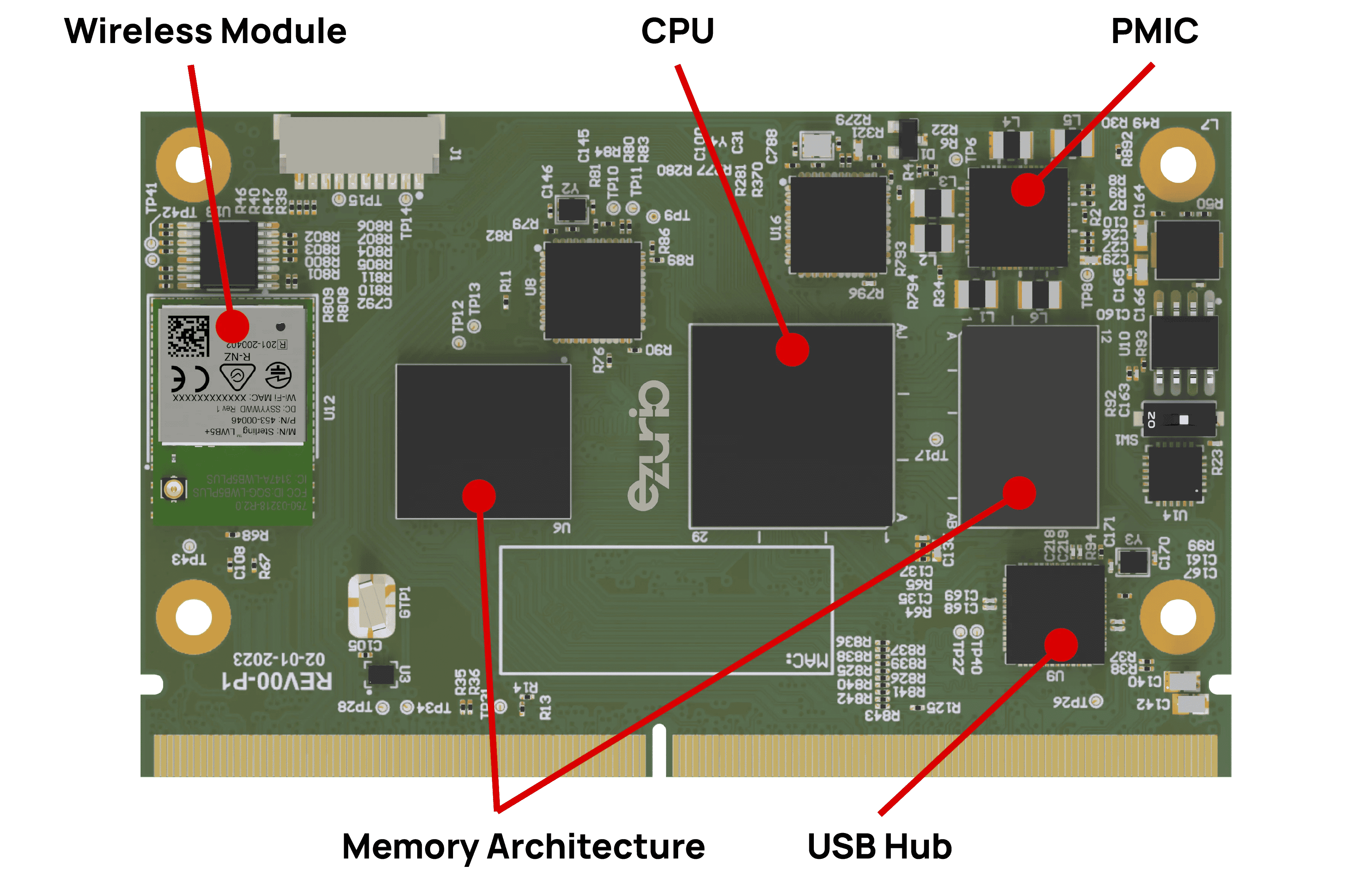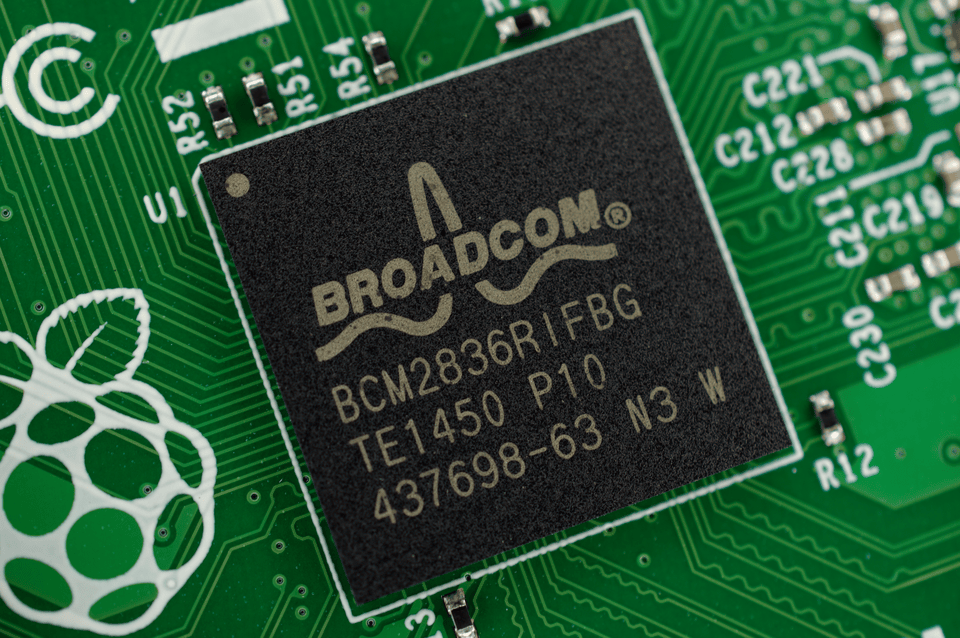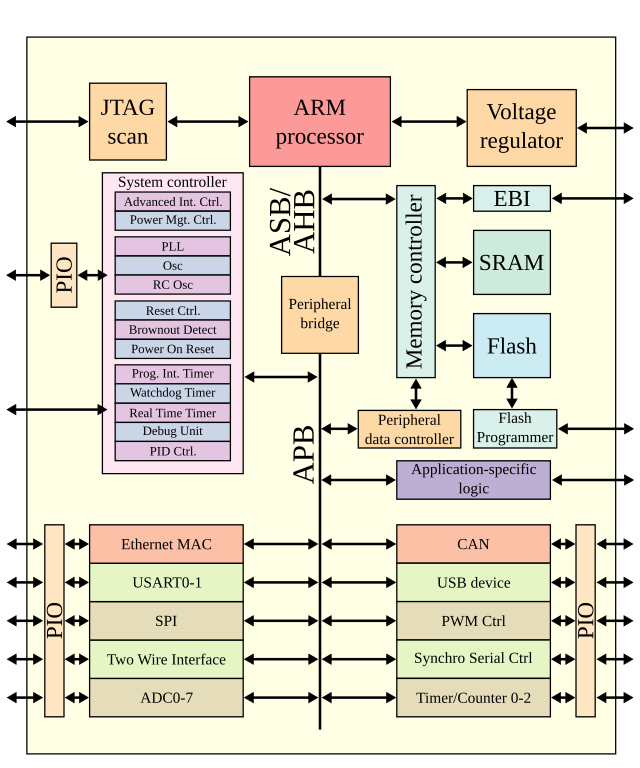Intro to HW/SW Co-Design and SoC Architecture

Introduction
Understand the fundamentals of embedded systems and the concept of hardware/software co-design, with a focus on System-on-Chip (SoC) architectures.
The increasing complexity of modern electronic devices drives the critical need for both co-design methodologies and integrated SoC architectures to achieve optimal performance and efficiency.
What Is an Embedded System?
An embedded system is a specialised computer, a combination of hardware and software, designed to perform a specific function within a larger system, whether mechanical or electronic. These systems are ubiquitous in our daily lives, often operating without direct user interaction.
Examples:
- Automotive ECUs (Engine Control Units)
- Smart thermostats
- Industrial controllers
- Fitness trackers
They often have:
- Microcontrollers or microprocessors
- Real-time constraints
- Input/Output devices
- Limited resources (power, memory, processing)
The key characteristic of embedded systems is that they are task-specific — they are designed to do one job and do it efficiently.

What Is Hardware/Software Co-Design?
Hardware/software (HW/SW) co-design means designing hardware and software in parallel, considering trade-offs and aiming to optimise performance, cost, and power consumption. This approach is often iterative, with decisions in one domain influencing the other throughout the development cycle.
Trade-offs can include:
- Performance vs. power
- Cost vs. flexibility
- Software simplicity vs. hardware complexity
For instance:
- A sensor reading might be filtered in hardware (fast, low power) or software (flexible, easier to update).
This approach enhances collaboration between hardware and software teams to create more efficient and integrated products.
System-on-Chip (SoC) Architecture
A system-on-chip (SoC) architecture integrates most or all components of a computer or electronic system onto a single microchip, including the CPU, memory, and input/output interfaces. This design enhances efficiency and reduces power consumption, making SoCs ideal for mobile devices and embedded systems.
An SoC integrates all components of a computer or other system into a single chip:
- CPU cores (e.g., ARM, RISC-V)
- Memory (SRAM, Flash)
- I/O interfaces (SPI, UART, I2C)
- Peripherals (timers, ADCs)
- Sometimes accelerators (for AI, signal processing)

Why SoC?
1. Saves Space and Energy
- Why? SoCs integrate multiple components (CPU, GPU, memory controllers, I/O interfaces, etc.) onto a single chip.
- Effect: This reduces the need for separate chips and interconnects, minimising the physical footprint and power consumption, critical for mobile and embedded systems. This also contributes to increased reliability due to fewer external connections.
2. Reduces Latency and Cost
- Why? With everything on one chip, data transfer between components is faster due to shorter distances and optimised internal communication pathways.
- Effect: This reduces latency. By integrating components, SoCs reduce the need for additional packaging, PCB complexity, and power delivery infrastructure, thereby lowering overall costs.
3. Increases Integration for Mobile and Embedded Devices
- Why? SoCs are specifically designed to integrate essential functions into a single chip, tailored for compact environments.
- Effect: This high level of integration makes SoCs ideal for mobile phones, wearables, IoT devices, and automotive ECUs, among other applications, where space, power, and thermal efficiency are limited.
Why Not SoC?
1. Limited Flexibility and Upgradability
- Why? All components are tightly integrated.
- Impact: You can't easily upgrade or replace individual parts (e.g., just the CPU or GPU) without redesigning the entire SoC.
2. Complex Design and Verification
- Why? Packing everything into one chip increases design complexity.
- Impact: More difficult and costly to design, test, and validate — especially when supporting multiple functions (CPU, GPU, modem, etc.). Specialised tools are often required for simulation and verification in this complex design process.
3. Heat Concentration
- Why? High integration means all active components are densely packed.
- Impact: This can lead to hotspots and thermal management challenges, especially under high loads.
4. Not Ideal for High-Performance or Specialised Tasks
- Why? SoCs are optimised for efficiency, not maximum performance.
- Impact: For servers, desktops, or specialised workloads (e.g., gaming, AI training), discrete components often outperform SoCs.
5. Higher Development Costs at Scale
- Why? Custom SoCs (like Apple's M-series or Google's Tensor) require major upfront investment.
- Impact: Only cost-effective at high production volumes. Otherwise, using off-the-shelf components may be cheaper and more practical.
6. Vendor Lock-In
- Why? Many SoCs are proprietary (e.g., Qualcomm Snapdragon, Apple Silicon).
- Impact: Limits software portability, customisation, and long-term support options.

Conclusion
In summary, embedded systems are specialised computers, designed to do one thing, and do it well. Their efficient development heavily relies on hardware/software co-design.
While many embedded systems are built around microcontrollers, System-on-Chip (SoC) architectures are increasingly central to the design of more complex and feature-rich embedded devices. Using software as a means of differentiating products based on the same hardware platform.
Understanding these interdependencies is crucial for creating optimised and successful embedded products that meet the demanding requirements of modern applications.
Further reading
CPU vs MCU vs SoC: What’s the Difference? - It helps distinguish between different chip types used in embedded design.